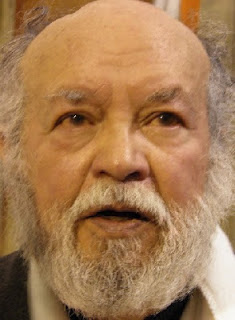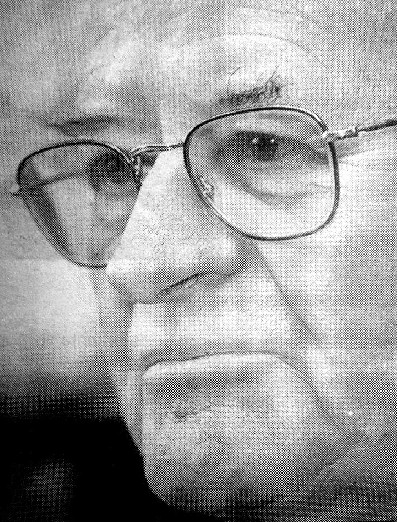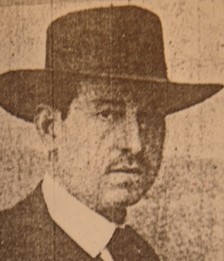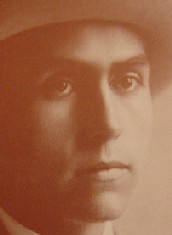GIL IMANA GARRON
He studied at the School of Arts 'Zacarias Benavides' (1942) Sucre. Then he became a student of John Rimsa on the upper reaches of 'Rimsa' Fine Arts (1945-1947), in Sucre. He exhibited his work since 1949. In 1950 part of Antaeus Group, alongside Walter Solon Romero, his brother Jorge Vaca Imaná and Lorgio. Professor of the School of Plastic Arts of the University of Los Andes in Merida, Venezuela (1958-1960). Return in Bolivia, was invited to assume the leadership of the School of Arts 'Zacarias Benavides' (1960). Professor of the School of Arts 'Hernando Siles' (1961-1964). ABAP president of La Paz (1969). She has participated in the Biennial of Sao Paulo, Mexico City, Lima, Quito, Cuenca, Córdoba, Montevideo, Maracaibo, Miami and Venice. He came to exhibit in distant countries like Russia. His most notable murals are: History telephony (Sucre, 1955); March to the Future (Sucre, 1957); Civil works of Marshal Andres de Santa Cruz (LP, 1965); Earth and life, technology and space and March of the university (LP, ceramics, 1965); Transit time (LP, ceramics, 1981); Health Party (LP, 1982).

ALFREDO LA PLACA SUBIETA
(Potosi, Bolivia, 1929) .- Painter based in La Paz. He studied at the Art Academy in Breda in Milan, Italy. He later worked in the workshop of Samson Flexer in Brazil, where he also took courses in graphic arts. He led the National Art Museum based in La Paz (1976). His first exhibitions date from 1955, when he participated for example in the III Biennale of Sao Paulo, Brazil. Then pass a biennial in Spain and Mexico. He also visited Colombia, Argentina, Ecuador and the United States, then Paris, France, where he resided for some time. The journalist Alfredo Alexander said: "In painting there anguished Alfredo La Placa A dream dreams excitement I found an original combination of colors, soft, veiled touches that attenuate tones and at the same time give the impression of a desperate expression.. it is combusted in itself. That burns while supplies endurance. " Mariaca the painter Raul scored in 1982: "Alfredo La Placa, a lover painter shape, texture and strictly controlled color. Create magnificent compositions generally based on the idea of real objects, sifting through their critical talent to reduce them to acquire basic shapes abstract characteristics, enriched by a systematic and meticulous treatment of textures. " To define their own work, in dialogue with the journalist Miguel Vargas, Plate said: "My painting has been classified as an abstract and it is not so. To me, the tags are not me. A painter paints well, look bad, paint or paint bit much ... but the work deserves respect because it is a gift, that is an apostolate. "

ALFREDO DOMINGUEZ ROMERO
(Tupiza, Potosi, Bolivia, 1938 - Geneva, Switzerland, 1980) .- Musician, composer and painter. He lived for several years in La Paz. His father was a carpenter and his mother dulcera. As a child he left school. In his homeland he was related to Liber Forti and the theater group 'Horizons'. Around 1950 he moved to Argentina to work in the harvest. There he meets the first notes of guitar. In 1953 he joined a small Chilean circus called 'Pan' which initially became caretaker of monkeys, according to the request of the circus then had to make a clown in certain functions; He was with them for about a year and a half. Back in Bolivia he began to cultivate more decisively music lessons by Jose Ortega. His father, a good carpenter, he built his first guitar. So you decide to start their first tour: the mining centers of the south. Until that comes to his military service. After a short time in football activities finally defined by the arts, influenced by men like Liber Forti said. This process is an important milestone Folklore Festival Latinoamericano de Salta (1967), where he won the Gold Medal for Best Latin Soloist. Next to folk music group 'Los Jairas' was an activist of the Rock 'Naira'. Subsequently, by the same group leaves for Europe, thanks to an invitation from the Patiño Foundation in Geneva, Switzerland. It is said that some European critical Dominguez cataloged as one of the ten best guitarists in the world. He is the author of nearly four dozen discs. He died victim of Chagas disease. Prizes: Second Prize Contest Self Portrait Gallery 'Ark' (LP, 1967); Second Prize in the National Drawing Contest UTO (Oruro, 1968); First Prize in drawing Murillo Hall with the work 'Market' (LP, 1969); Print Competition Award in the gallery Contemporary Inter-Arts de Lyon (France, 1973); Ousmanski International Engraving Prize awarded by the Society of Arts of Geneva (Switzerland, 1976); Engraving Prize in INBO Art Biennale with his work 'Pedrito seven months' (LP, 1977).

ARTURO BORDA GOSALVEZ
BORDA Gosálvez, Arturo (La Paz, Bolivia, 1883-1953) .- painter and poet. Precursor of socialism in Bolivia. Secretary General of the Workers Federation of Labor in La Paz (1921). Self-taught painter, is estimated to have produced over three thousand paintings throughout his life. According to Ronald Roa, in 1915 he exhibited 30 paintings; in 1917, 240 paintings; in 1919, in Buenos Aires, 78 works. So actively in the social and cultural visa of La Paz he participated; was cast in the film 'Wara Wara' directed by Velasco Maidana. One of the first testimonies about his life and work was given around 1955 by writer Porfirio Diaz Machicao, who recalled: "Once I visited a man who lived in a room upstairs in the street 'Mapiri'. Bohemian, full of talent, horribly restless and infinitely free, this man lived facing the mountain he had loved since her eyes were opened to the light in our skies. The balcony was a viewpoint that faced the Illimani, allowing the cover to view all the charm of the calacoteños green fields. The man was a painter and wrote. He had made a giant colorful work, which had been spread by the four cardinal points of the city and some places of America. As for the deeds which the destination remains to this day unpublished- had a stack of about thirty volumes of a book entitled 'El Loco' ". "This great man lived and died painting the Illimani" says Jaime Saenz. Among his most famous paintings are: My two sisters (around 1916), El Yatiri (1918), Gosálvez My parents Leonor and José Borda (1943) and criticism of the isms and the triumph of classical art (1948), plus Illimanis, several of them in museums in La Paz. The writer Carlos Medinaceli was emphasized in 1953: "... his work is the most national spirit holds and reflects more accurately the Bolivian Reality view life through the spirit of an artist, a psychologist and a 'devastating'. zaratústrico and Marxist. " Husbands Mesa / Gisbert they comment: "The case of Arturo Borda is one of the most interesting and original in the Bolivian art during his time unnoticed and scarcely a limited group of his contemporaries realized his talent /.. Borda ../ At first glance it appears as an exotic figure in the living room that will fit, but a careful analysis shows that it is a typical product of its time, the culture of his time and Borda group collects ideas thinkers and aesthetes to which he belonged. " Blanca Wiethüchter notes that were in Borda "An excess in the joy of being alive. As too was in everything he undertook. We must simply read his autobiography. A disproportionate multiplication of paintings, an excessive proliferation of words, a desire to be guided by the creative breath. As if there were time, as if there were no possibility to calm the storm. Thus, both his paintings and literary become irregular, and his work is stretched over a wire that goes from great to frankly bad, mediocre a few times intensities achieved in Bolivian literature. That same excesses in his doing it seems that impacted on the intention of showing utter disregard for the installed around "social values. Carlos Salazar emphasizes. "It's the first thing national landscape discovering the character as particularly defined Andean moles to point as Bolivians landscapes, not elsewhere It is also the first thing critique of society, dissecting the past and . present and envisioning the future His work connects with great spiritual problems: the tragic sense of life is a frequent presence in his paintings, and that's also an initiator ". A poem by Borda says: "I know of the last secrets of love / longing and extract the hidden honey / in the burning passions, / and the hummingbird nectar imbibes / chalices in an enchanted garden / a twilight . / Speak and hear the immortal / Anthem consolation and sadness / chant my spirit. "

CECILIO GUZMAN DE ROJAS
Guzman de Rojas, Cecilio (Potosi, Bolivia, 1899 - La Paz, Bolivia, 1950) .- Painter. He went early to the Painting Academy of Cochabamba (1912), where his teachers were Avelino Nogales, Berry and Fortunato Diaz Luis Oropeza. There his military service in the cavalry regiment 2 (1918). In his famous 1919 painting 'Self Portrait', a work that is in the mint of Potosi. In this city his first exhibition in 1920. With financial support from his mother (Just Rojas), in 1921 he traveled to Europe to study at the School of Barcelona, Spain; in 1923 he passed the Ecole des Beaux Arts in Paris, where he met Picasso; in 1924 returns to Spain to pursue studies in the School of Madrid. After making an acclaimed exhibition in Madrid, returned to Bolivia in June 1929. Exhibition in Potosi and Sucre. By 1930 he was appointed Director General of Fine Arts in Bolivia. He also leads the Department of Artistic Heritage of the Ministry of Education, where he worked with the architect Emilio Villanueva, then Minister of Education (1929-1930). Since then it makes cataloging the artworks of colonial and republican period, including Melchor Perez discovers Holguin, who exhumed more than 400 fabrics. Attend the Chaco War (1934). In 1945 returned to Europe, this time invited by the British Council in London, to study painting restoration as an intern; participates in the restoration of several boxes, damaged by the bombings of World War II museum. The following year returns to Bolivia to concentrate on the so-called 'Painting Coagulatoria', a fact that opens controversial in the middle. He makes exhibitions in Buenos Aires and Santiago de Chile. Until one commits suicide February 14, 1950 Llojeta area. His most notable works include The Triumph of Nature (1928); Idol Kiss (1927-1929); Ñusta (1932); Bed 33, evacuable (Chaco War, 1934); Aymara Christ (1939). In art historian Vicente Gesualdo values it: "This Bolivian artist is one of the strongest exponents of pictorial art in Latin America with the Peruvian José Sabogal and Rivera, Orozco and Siqueiros Approaching the Mexican Indian to fix traits. his face, approached the best men of his generation to that suffering and forgotten race. He did not set out to do social art, according to the slogan that did not accept his sensitivity, but arose spontaneously from his social work. " For its part the Bolivian scholar Rigoberto Villarroel Claure defined in 1962: "No running in his veins the blood of the Basques, or conquerors of the noble and ancient colonial capital, but the dark rebel and untamed of Cochabamba earth valleys would be. useful for understanding of its troubled and contradictory temperament a psychoanalytic investigation of its origin:. tender and noble sometimes, combative and violent other I had a firm direction in life: a passionate love for the native and the pursuit of art in the bowels Earth to give him his livelihood. " His thinking about their own work, can be synthesized in the following passage, said in 1929: "In my work you will see that there is no objective documentation of nature but the Bolivian feeling inside its static form, based on the great Tiahuanaco art; superior, stylized, rhythmic, pianist, decorative art, synthesized in the purest analytical concept and with full contact with the Incan, Mayan, Egyptian art. As for his acting and color way, I have the sincerity to say as restless man and aware that I can not part with the innovative power of my century. My technique is inspired by the Venetian with the chromatic exaltation transparency technique tempera painting can get "teachers.

.jpg)